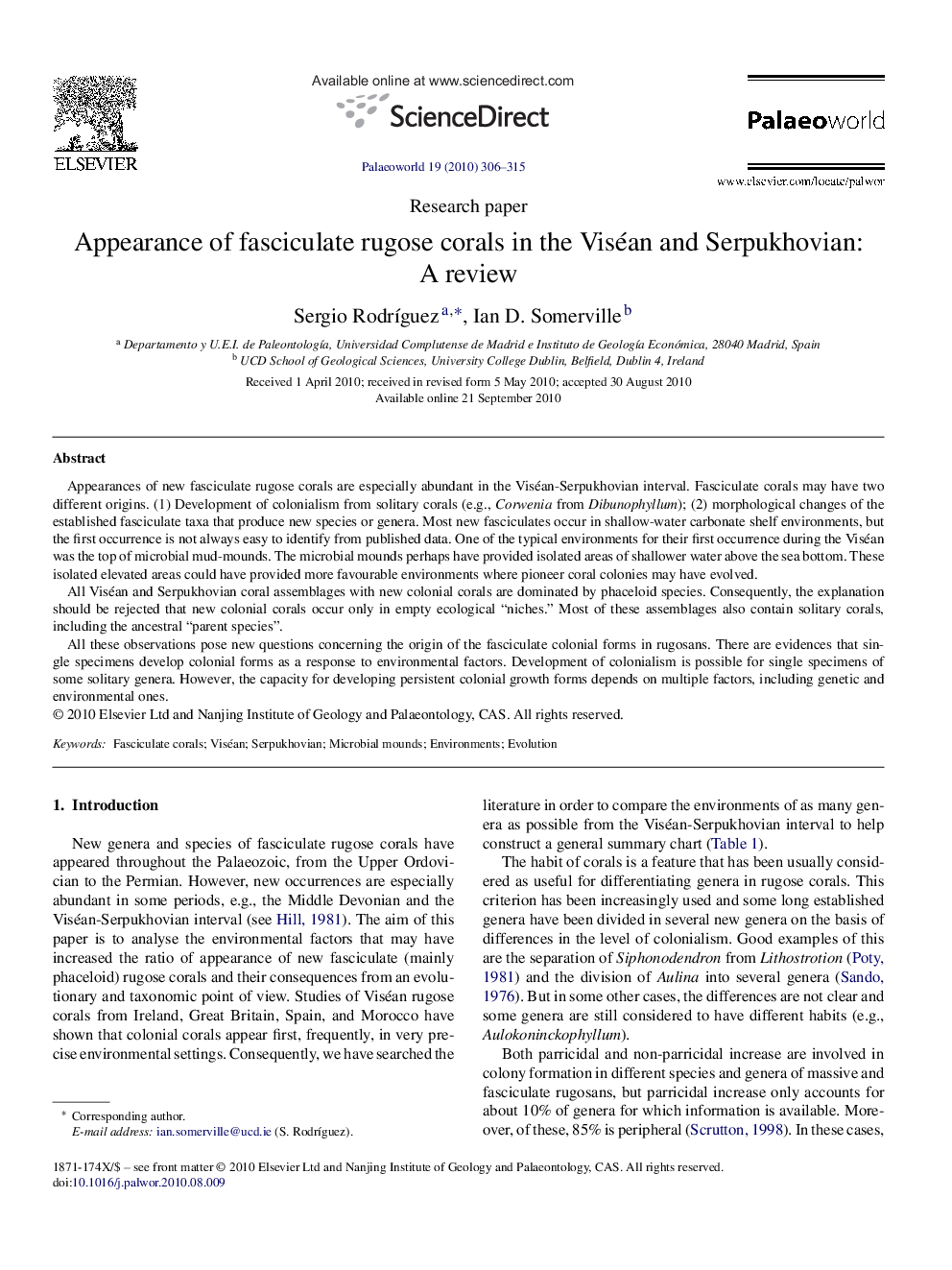| کد مقاله | کد نشریه | سال انتشار | مقاله انگلیسی | نسخه تمام متن |
|---|---|---|---|---|
| 4749827 | 1642282 | 2010 | 10 صفحه PDF | دانلود رایگان |

Appearances of new fasciculate rugose corals are especially abundant in the Viséan-Serpukhovian interval. Fasciculate corals may have two different origins. (1) Development of colonialism from solitary corals (e.g., Corwenia from Dibunophyllum); (2) morphological changes of the established fasciculate taxa that produce new species or genera. Most new fasciculates occur in shallow-water carbonate shelf environments, but the first occurrence is not always easy to identify from published data. One of the typical environments for their first occurrence during the Viséan was the top of microbial mud-mounds. The microbial mounds perhaps have provided isolated areas of shallower water above the sea bottom. These isolated elevated areas could have provided more favourable environments where pioneer coral colonies may have evolved.All Viséan and Serpukhovian coral assemblages with new colonial corals are dominated by phaceloid species. Consequently, the explanation should be rejected that new colonial corals occur only in empty ecological “niches.” Most of these assemblages also contain solitary corals, including the ancestral “parent species”.All these observations pose new questions concerning the origin of the fasciculate colonial forms in rugosans. There are evidences that single specimens develop colonial forms as a response to environmental factors. Development of colonialism is possible for single specimens of some solitary genera. However, the capacity for developing persistent colonial growth forms depends on multiple factors, including genetic and environmental ones.
Journal: Palaeoworld - Volume 19, Issues 3–4, December 2010, Pages 306–315